Still learning what all the buttons do so this is very preliminary. Testing on a BLF-20DD, with the known-working combo of Vishay 70N02 FET, 130 ohm gate resistor, 12K gate pulldown resistor. Using a fast-PWM build of luxdrv, I'll get to other versions eventually to see if there's a difference.
In 'low' mode (PWM value of 12), this is the waveform at the FET's gate pin with the driver running normally:
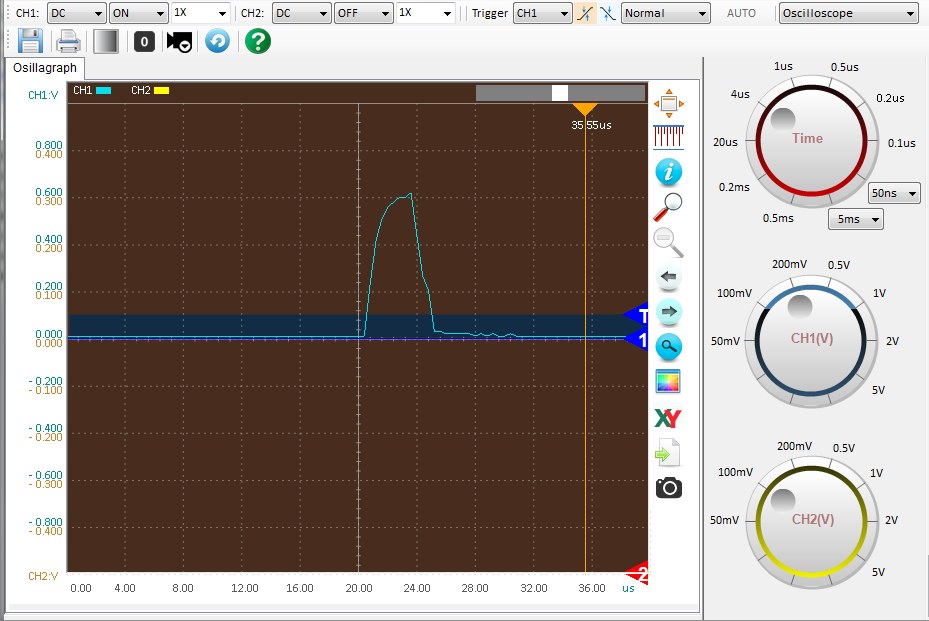
...and then, with the gate resistor jumpered (actually, just grabbed on both pads with tweezers):
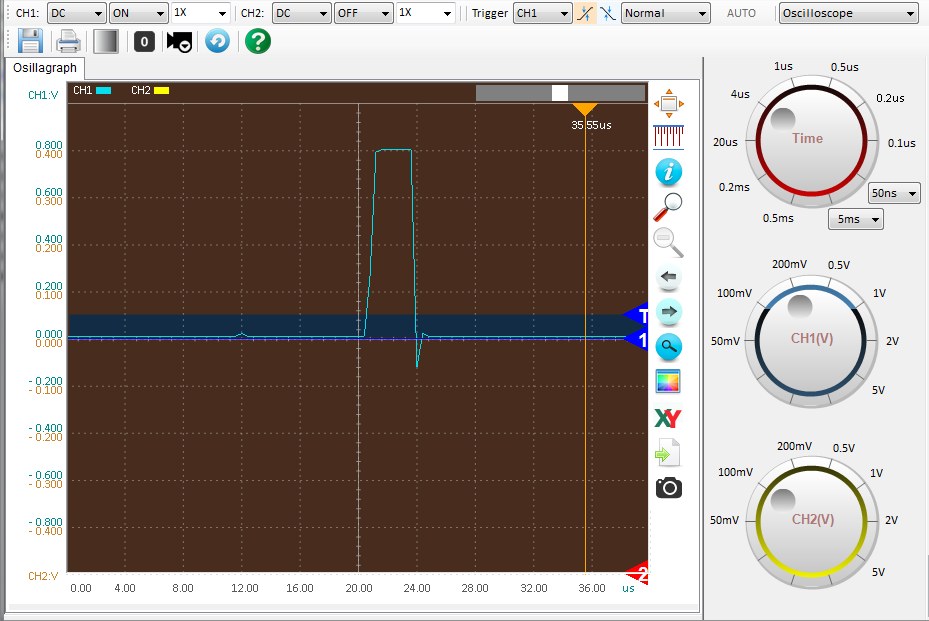
Interesting thing I wasn't expecting, the LEDs got dimmer with the gate resistor shorted. The peak at the gate is higher, but for less time. The resistor really drags it out and that leaves the FET on (or partially on) for longer, which makes more light.

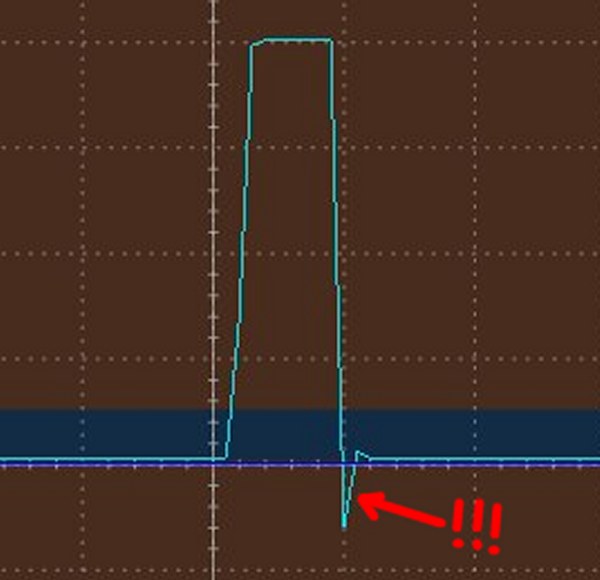

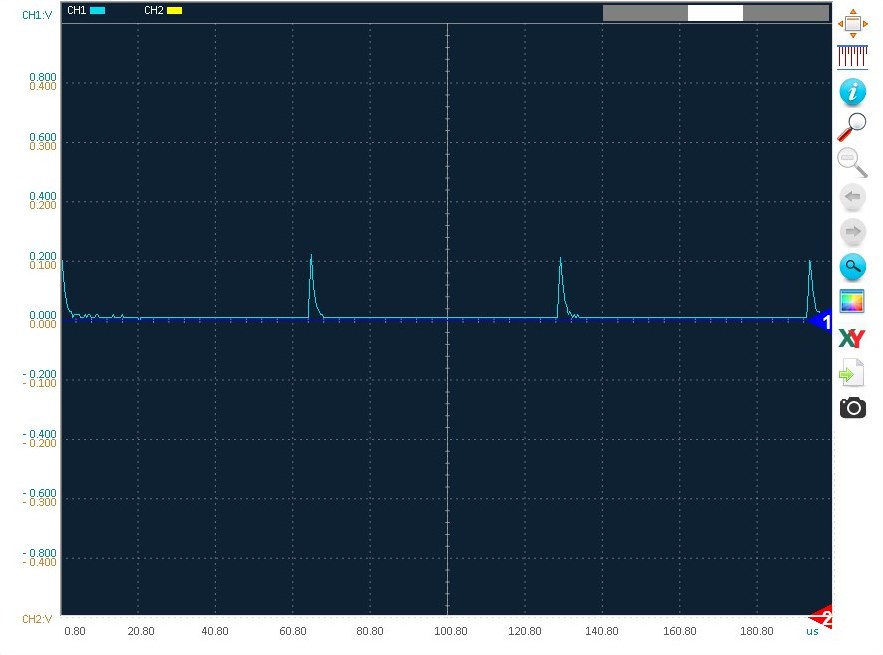

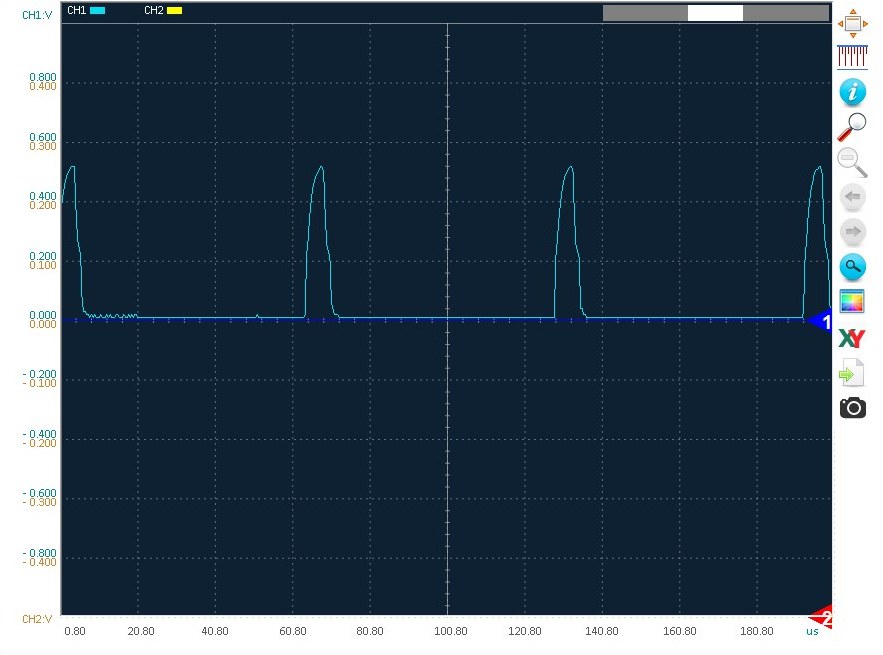
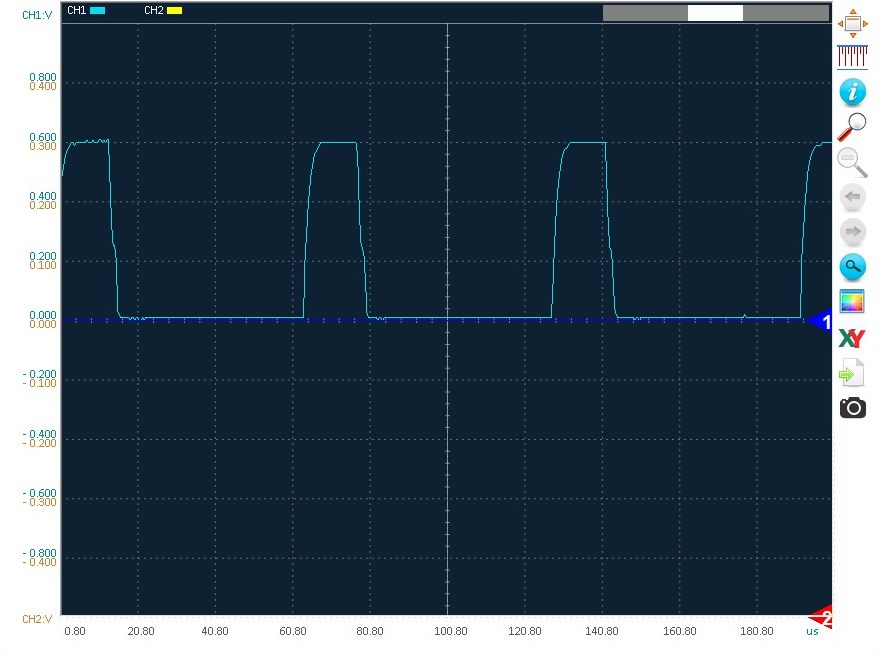

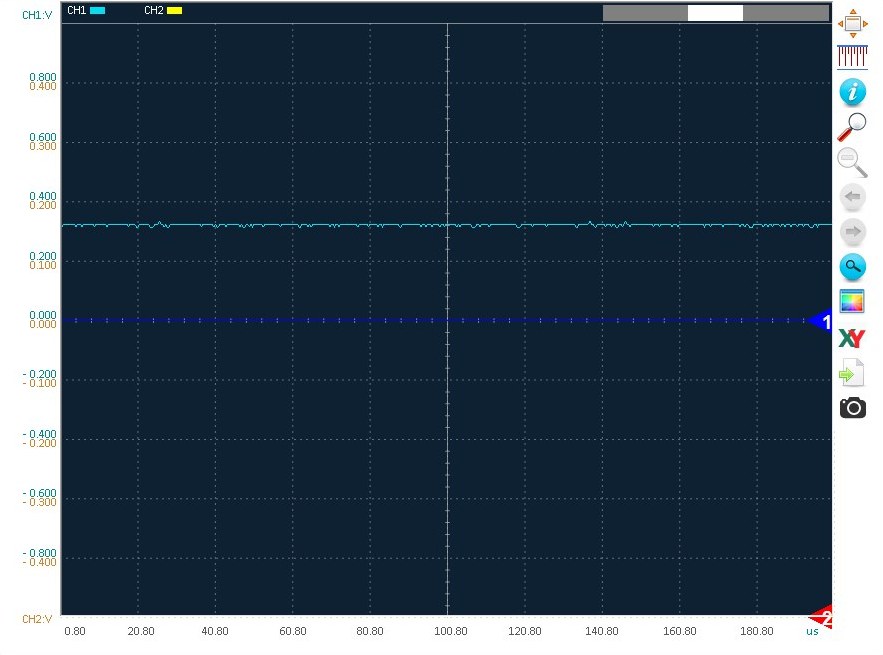

 . Reminds me of HKJ's review of the qlite driver and its problems with highfreq. modulation
. Reminds me of HKJ's review of the qlite driver and its problems with highfreq. modulation


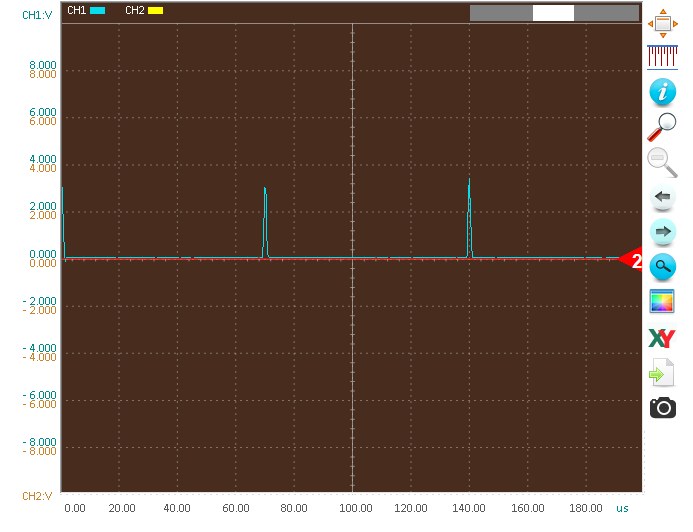
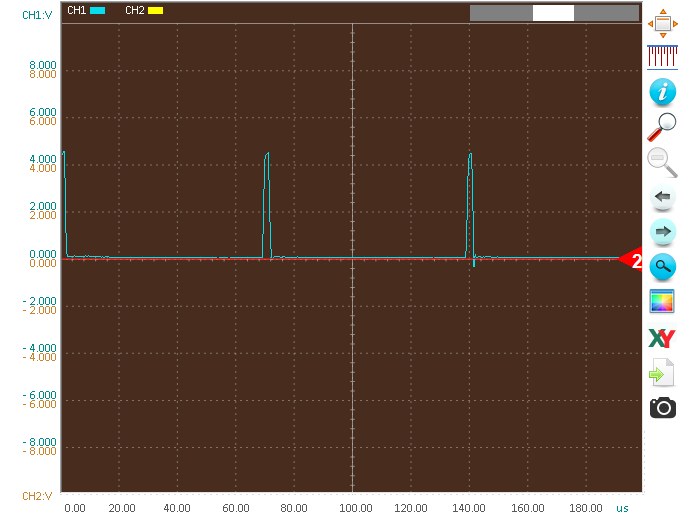
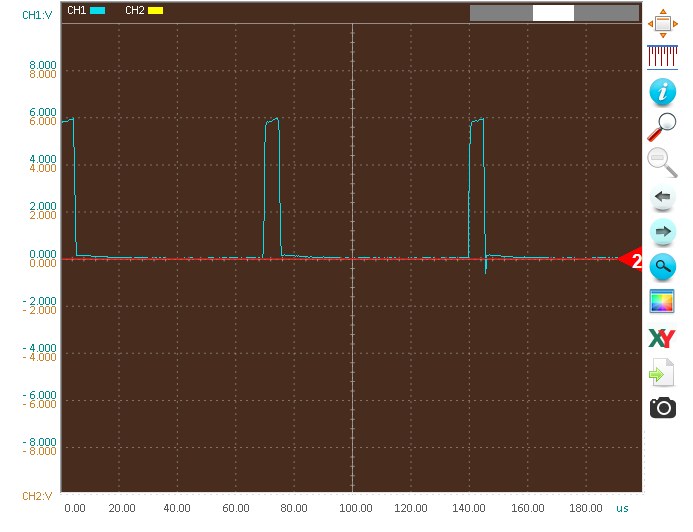
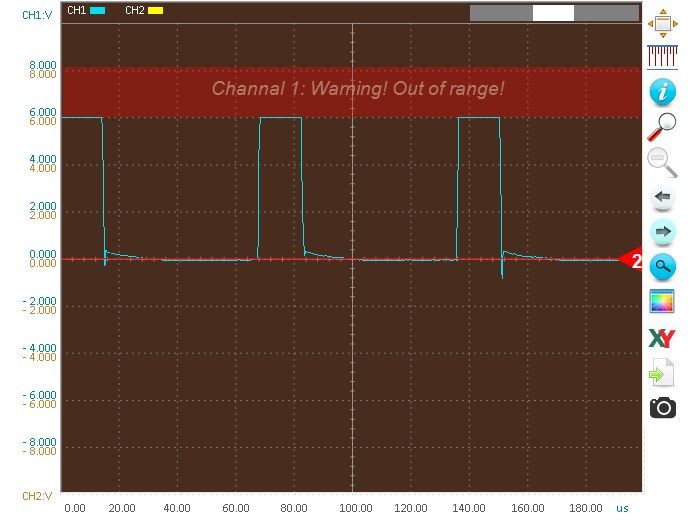
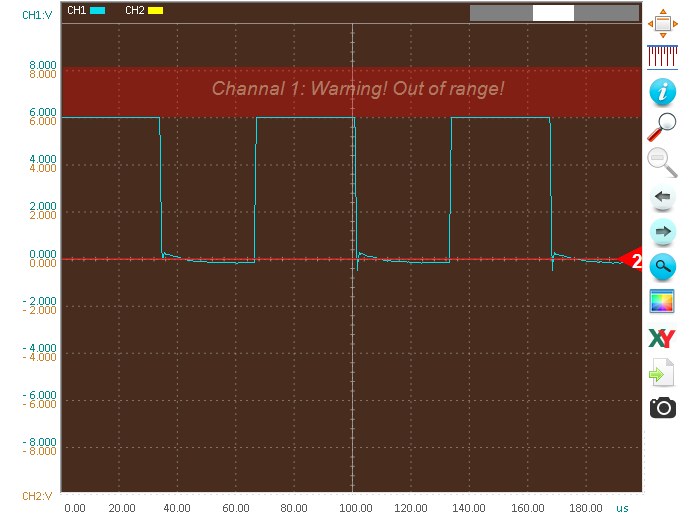


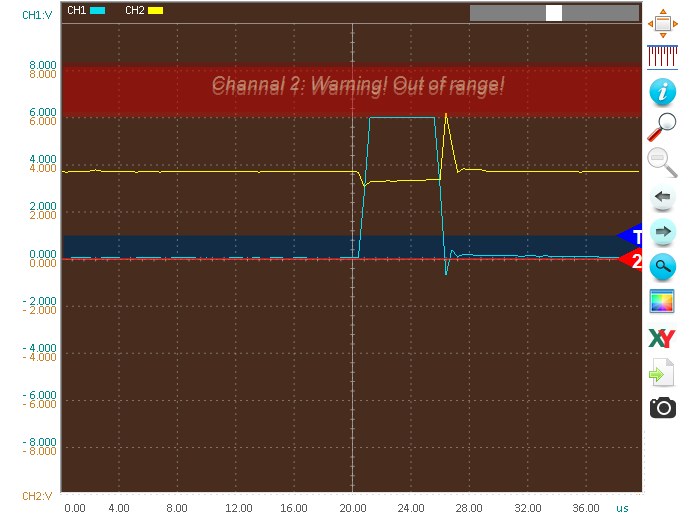
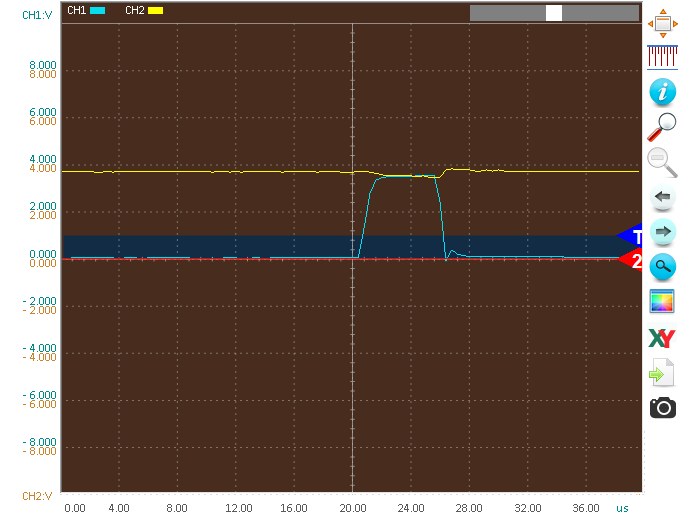


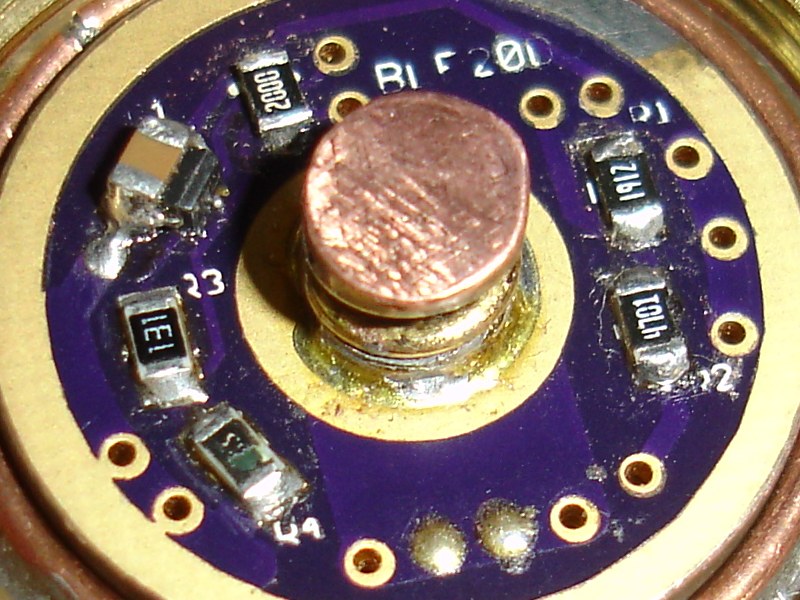


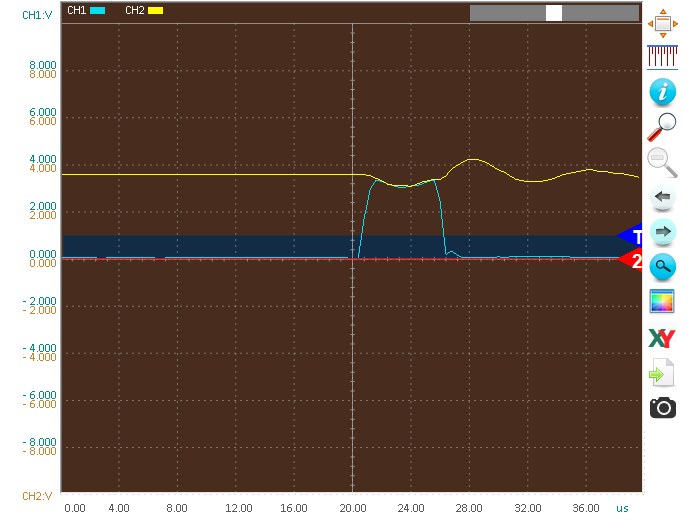

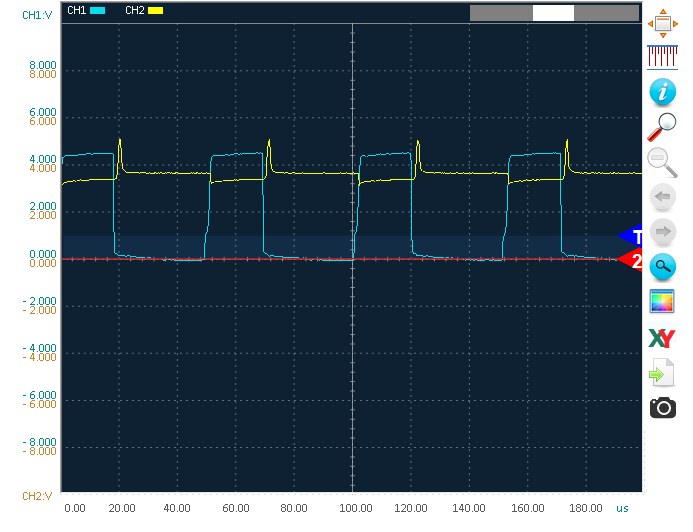
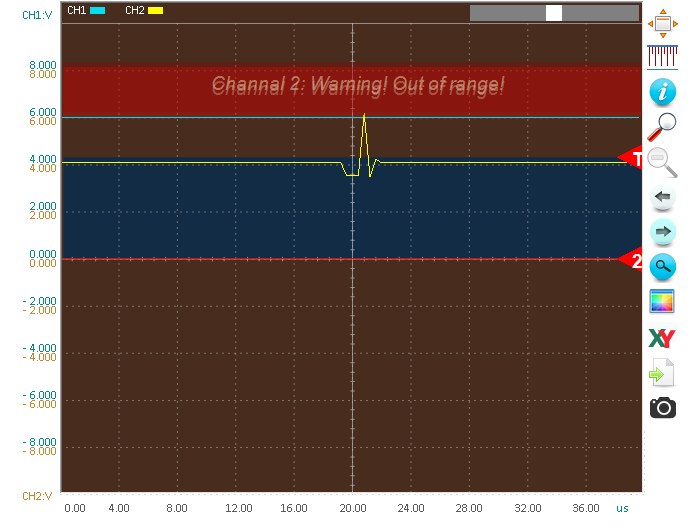
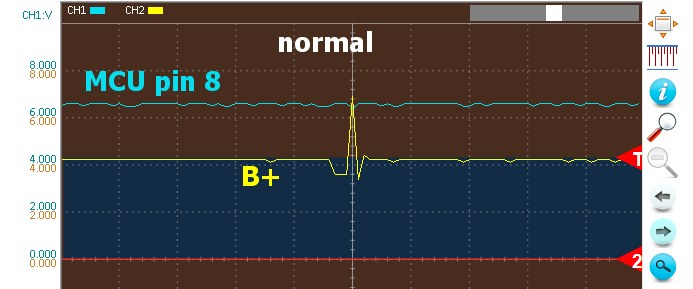



 (and it still wouldn't change modes right, and so far I haven't seen anything that will fix the glitchy mode changing issue that doesn't also fix the over-voltage thing)
(and it still wouldn't change modes right, and so far I haven't seen anything that will fix the glitchy mode changing issue that doesn't also fix the over-voltage thing)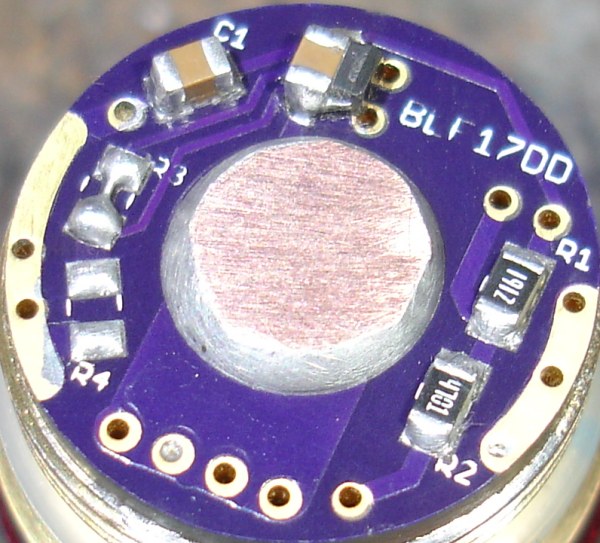



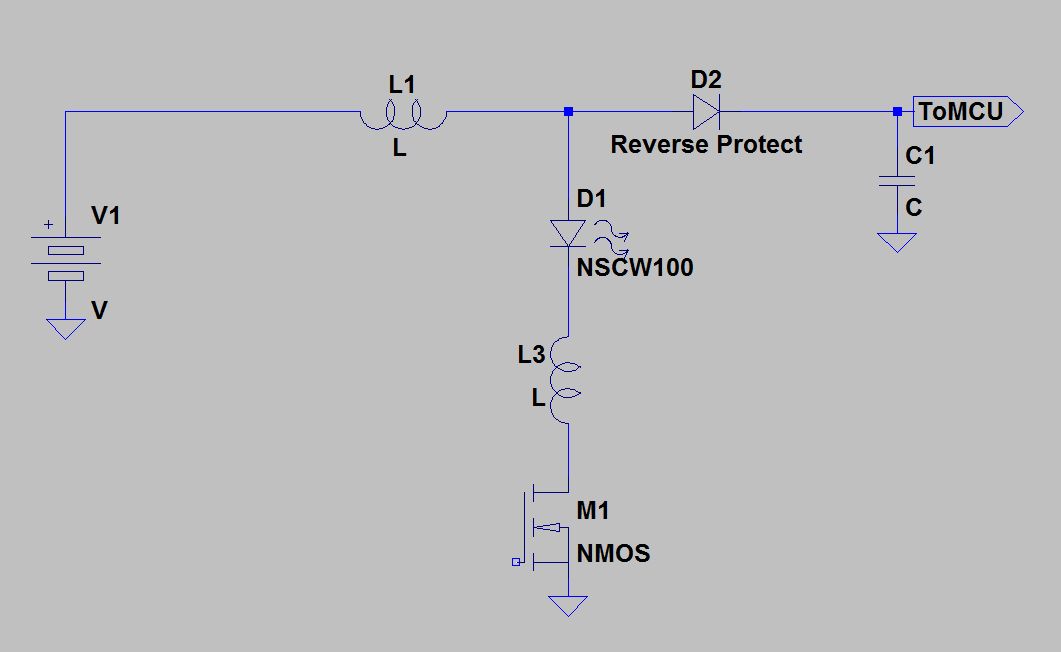

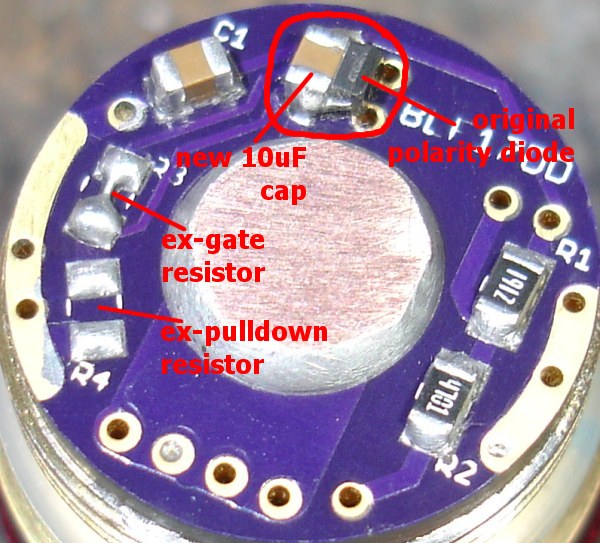
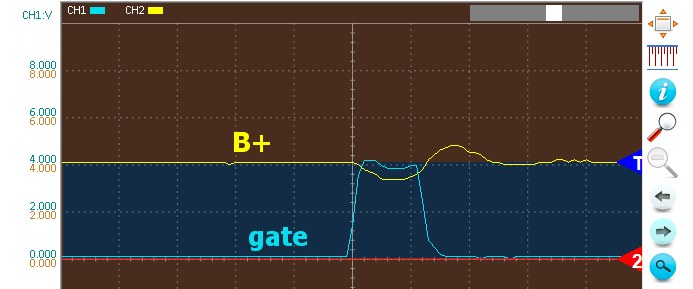





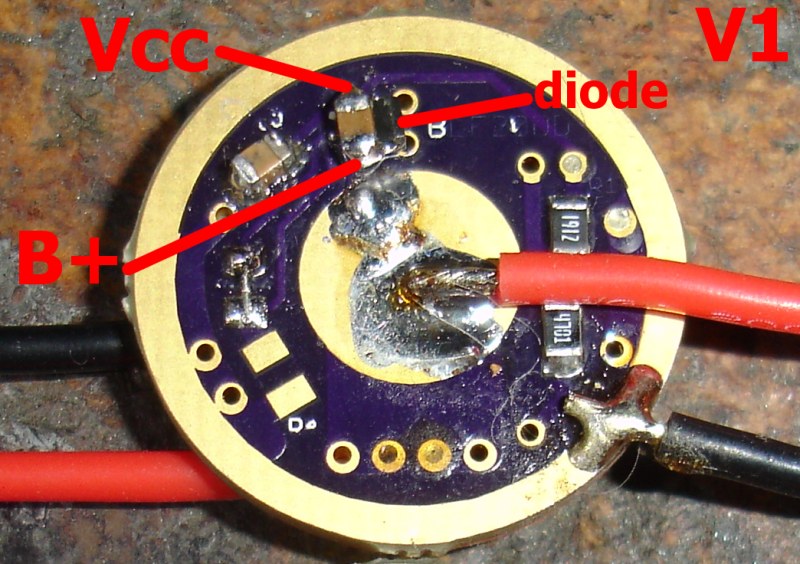
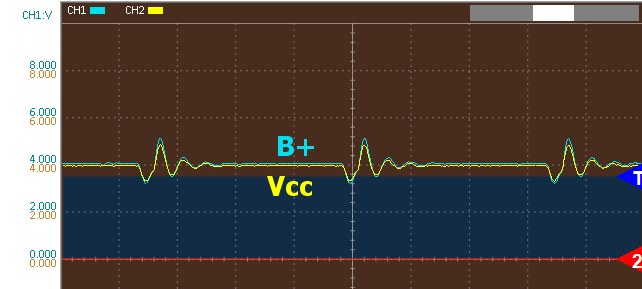

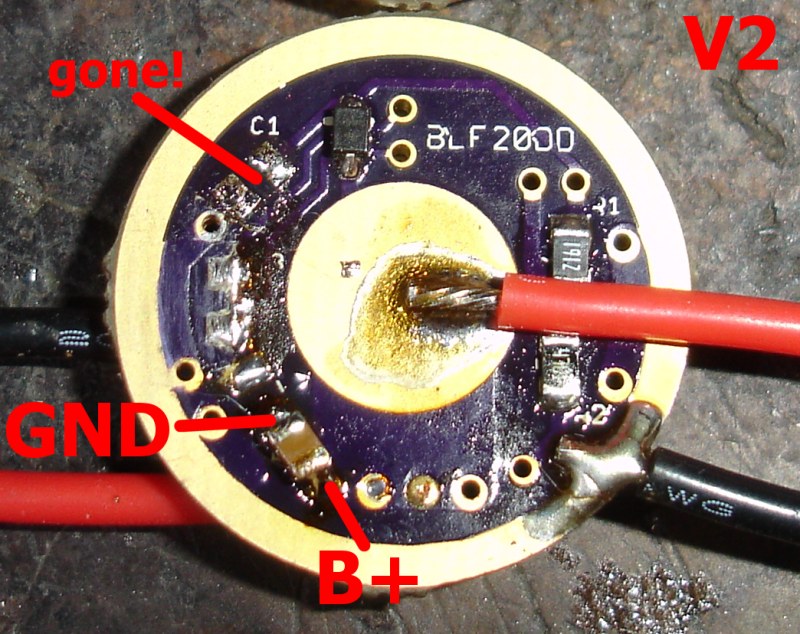

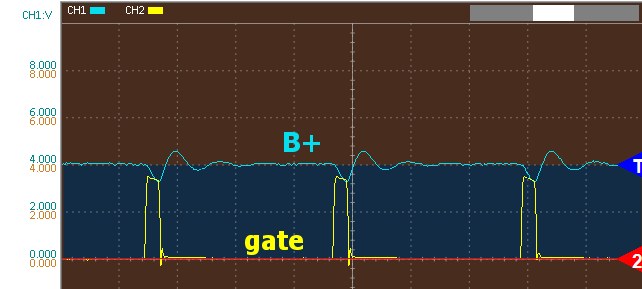

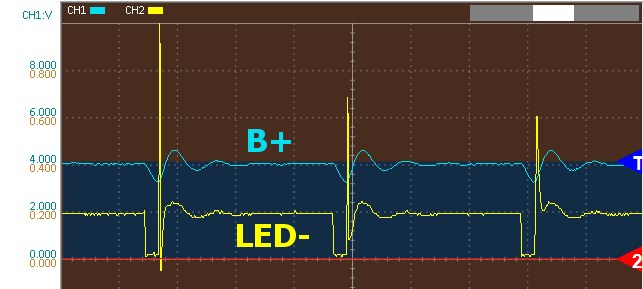
 (using different dividers to avoid the 'out of range' warnings, 0.8 is actually 8.0 ZERO YOU STUPID AUTO-SMILEY B.S.)
(using different dividers to avoid the 'out of range' warnings, 0.8 is actually 8.0 ZERO YOU STUPID AUTO-SMILEY B.S.)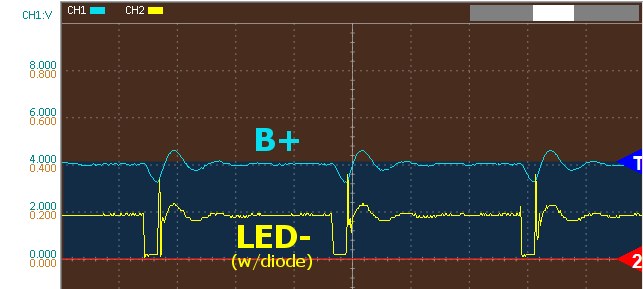


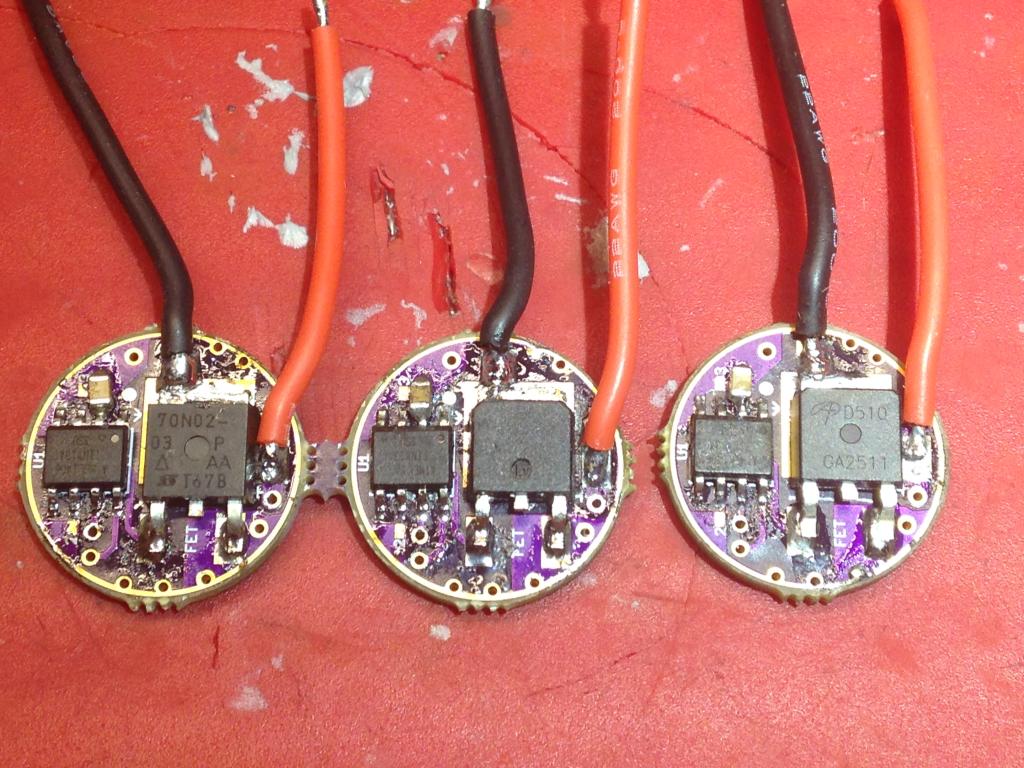









I'm not into this electronics much, but it is nice to see you looking at the new drivers like this, it will help finding the right values for the components more accurately. Was the driver under load of a led? Or does that not matter in this case?